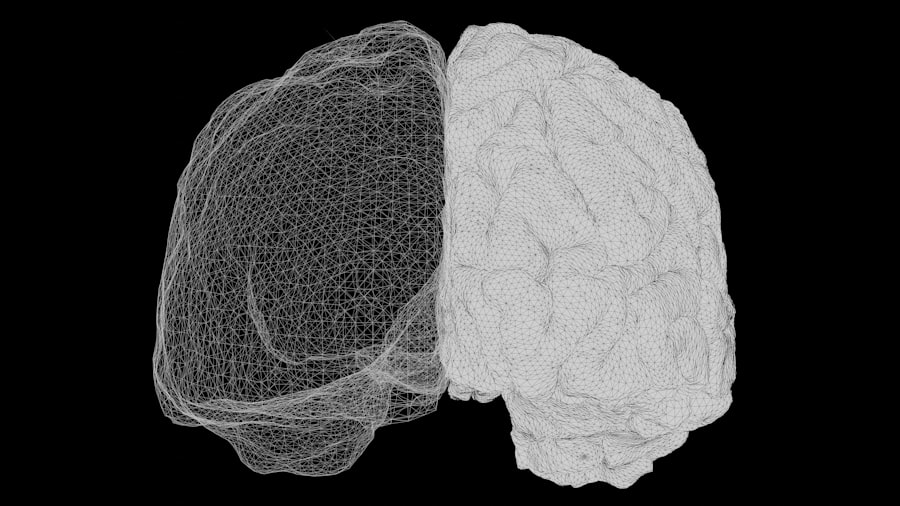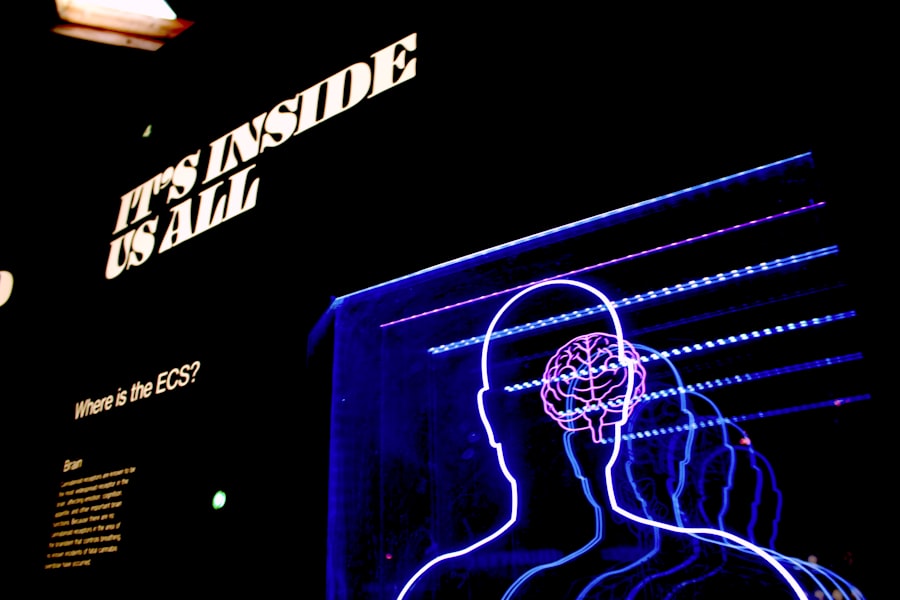You may not realize it, but your brain plays a pivotal role in your physical performance. The mind-body connection is a profound relationship that influences how you move, react, and perform in various physical activities. When you engage in any form of exercise or sport, your brain is constantly sending signals to your muscles, coordinating movements, and processing sensory information.
This intricate communication system is essential for achieving optimal performance, whether you’re running a marathon or lifting weights at the gym. Understanding this connection can empower you to enhance your physical capabilities. By recognizing that your mental state can directly affect your physical output, you can begin to harness the power of your mind to improve your performance.
For instance, when you approach a workout with a positive mindset, you are more likely to push through fatigue and achieve your goals. Conversely, negative thoughts can lead to decreased motivation and hinder your progress. By cultivating awareness of this relationship, you can take proactive steps to optimize both your mental and physical performance.
Key Takeaways
- The mind and body are intricately connected, and understanding this relationship is crucial for optimizing physical performance.
- Neuroplasticity plays a key role in overcoming physical limitations, allowing the brain to adapt and rewire itself to improve physical abilities.
- Mental blocks and negative thought patterns can hinder physical progress, highlighting the importance of addressing psychological barriers.
- Stress and anxiety can have a significant impact on physical performance, emphasizing the need for effective stress management techniques.
- Visualization and mental rehearsal are powerful tools for enhancing physical abilities, demonstrating the impact of cognitive strategies on physical performance.
The Role of Neuroplasticity in Overcoming Physical Limitations
Neuroplasticity is a fascinating concept that refers to the brain’s ability to reorganize itself by forming new neural connections throughout life. This adaptability means that you can overcome physical limitations by changing the way you think and train. When you challenge yourself mentally and physically, you stimulate neuroplastic changes that can enhance your performance.
For example, if you’ve struggled with a particular skill in sports, consistent practice combined with a positive mindset can lead to significant improvements over time. By embracing neuroplasticity, you can rewire your brain to support your physical goals. This means that even if you’ve faced setbacks or limitations in the past, you have the potential to break through those barriers.
Engaging in activities that promote neuroplasticity—such as learning new skills, practicing mindfulness, or even visualizing success—can help you develop new pathways in your brain that enhance your physical abilities. The more you challenge yourself, the more adaptable your brain becomes, ultimately leading to improved performance.
How Mental Blocks and Negative Thought Patterns Can Hinder Physical Progress

Mental blocks can be insidious barriers that prevent you from reaching your full physical potential. These blocks often manifest as self-doubt, fear of failure, or negative self-talk, which can create a cycle of frustration and stagnation. When you allow these thoughts to dominate your mindset, they can significantly hinder your progress.
For instance, if you constantly tell yourself that you’re not strong enough or skilled enough, you’re likely to internalize those beliefs and perform accordingly. Recognizing and addressing these negative thought patterns is crucial for overcoming mental blocks. You can start by identifying specific thoughts that arise during training or competition and challenging their validity.
Replacing negative self-talk with affirmations or constructive feedback can help shift your mindset toward a more positive outlook. By actively working to dismantle these mental barriers, you create space for growth and improvement in your physical performance.
The Impact of Stress and Anxiety on Physical Performance
| Metrics | Impact |
|---|---|
| Heart Rate | Elevated heart rate due to stress and anxiety can affect physical performance |
| Blood Pressure | Increased blood pressure can lead to decreased physical performance |
| Muscle Tension | Stress and anxiety can cause muscle tension, affecting flexibility and agility |
| Focus and Concentration | Decreased ability to focus and concentrate can impact coordination and reaction time |
| Recovery Time | Increased stress and anxiety can prolong recovery time after physical activity |
Stress and anxiety are common experiences that can have a profound impact on your physical performance. When you’re under pressure—whether from work, personal life, or competition—your body responds with physiological changes that can hinder your ability to perform at your best. Elevated heart rates, muscle tension, and shallow breathing are just a few ways stress can manifest physically, ultimately affecting your endurance and strength.
To mitigate the effects of stress and anxiety on your performance, it’s essential to develop coping strategies that work for you. Techniques such as deep breathing exercises, progressive muscle relaxation, or engaging in enjoyable activities can help reduce stress levels and promote a sense of calm. By managing stress effectively, you create an environment where your body can perform optimally, allowing you to focus on achieving your physical goals without the burden of anxiety weighing you down.
The Power of Visualization and Mental Rehearsal in Enhancing Physical Abilities
Visualization is a powerful tool that can significantly enhance your physical abilities. By mentally rehearsing movements and scenarios, you create a blueprint for success in your mind. This technique allows you to practice without physically exerting yourself, reinforcing neural pathways associated with specific skills or actions.
For example, if you’re preparing for a race or competition, visualizing yourself executing each movement flawlessly can boost your confidence and improve your performance. Incorporating visualization into your training routine can yield remarkable results. Spend time each day imagining yourself achieving your goals—whether it’s crossing the finish line first or executing a perfect routine in gymnastics.
The more vividly you visualize these scenarios, the more likely they are to manifest in reality. This mental rehearsal not only enhances your skills but also helps reduce anxiety by familiarizing yourself with the experience before it happens.
Breaking Through Plateaus: Using Cognitive Strategies to Push Past Physical Barriers

Plateaus are frustrating experiences that many athletes encounter during their training journeys. You may find yourself stuck at a certain level of performance, unable to make progress despite consistent effort. However, cognitive strategies can be instrumental in breaking through these barriers.
By shifting your mindset and employing new techniques, you can reignite your motivation and push past stagnation. One effective strategy is to reassess your goals and training methods. Are they still aligned with your current aspirations?
Sometimes, simply changing up your routine or setting new challenges can reignite your passion for training. Additionally, incorporating cognitive techniques such as positive affirmations or goal visualization can help shift your focus from frustration to determination. By embracing a growth mindset and being open to change, you can break through plateaus and continue progressing toward your physical goals.
The Influence of Motivation and Goal Setting on Physical Achievement
Motivation is a driving force behind any successful endeavor, especially in the realm of physical performance. Setting clear and achievable goals provides direction and purpose in your training regimen. When you have specific targets to strive for—whether it’s improving your speed, increasing strength, or mastering a new skill—you create a roadmap for success that keeps you focused and engaged.
To maximize the impact of goal setting on your physical achievement, consider employing the SMART criteria: Specific, Measurable, Achievable, Relevant, and Time-bound goals. By crafting goals that meet these criteria, you enhance your chances of success while maintaining motivation throughout the process. Regularly revisiting and adjusting these goals as needed ensures that you remain challenged and inspired on your journey toward improved physical performance.
The Role of Self-Talk in Shaping Physical Potential
Self-talk is an often-overlooked aspect of mental conditioning that plays a significant role in shaping your physical potential. The way you speak to yourself—internally or externally—can influence your confidence levels and overall performance. Positive self-talk can serve as a powerful motivator, encouraging you to push through challenges and maintain focus during training or competition.
To harness the power of self-talk effectively, start by becoming aware of the language you use when addressing yourself. Are you supportive and encouraging, or critical and dismissive? By consciously shifting toward more positive affirmations and constructive feedback, you can cultivate a mindset that fosters growth and resilience.
Remember that the words you choose have the power to shape not only how you perceive yourself but also how well you perform physically.
Overcoming Fear and Building Confidence for Improved Physical Performance
Fear is a natural response that can either motivate or hinder you in physical pursuits. Whether it’s fear of failure, injury, or not meeting expectations, these feelings can create significant barriers to achieving your goals. To overcome fear and build confidence in your abilities, it’s essential to confront these emotions head-on rather than allowing them to dictate your actions.
For instance, if you’re anxious about competing in front of an audience, consider starting with smaller events before gradually working up to larger competitions. Additionally, surrounding yourself with supportive individuals who encourage growth can help bolster your confidence as you navigate challenges together.
The Importance of Mindfulness and Meditation in Enhancing Physical Abilities
Mindfulness and meditation are practices that have gained recognition for their ability to enhance both mental clarity and physical performance. By cultivating present-moment awareness through mindfulness techniques, you can improve focus during training sessions while reducing distractions that may hinder progress. This heightened awareness allows you to connect more deeply with your body and its movements.
Incorporating meditation into your routine can further amplify these benefits by promoting relaxation and reducing stress levels. Regular meditation practice helps train your mind to remain calm under pressure—an invaluable asset during competitions or high-stakes situations. As you develop mindfulness skills over time, you’ll likely notice improvements not only in physical performance but also in overall well-being.
Seeking Professional Help: Utilizing Cognitive Behavioral Therapy and Mind-Body Interventions to Maximize Physical Potential
If you’re struggling with mental blocks or emotional barriers that impede your physical performance, seeking professional help may be beneficial. Cognitive Behavioral Therapy (CBT) is an evidence-based approach that focuses on identifying negative thought patterns and replacing them with healthier alternatives. Working with a trained therapist can provide valuable insights into how your mindset affects performance while equipping you with tools to overcome challenges.
Additionally, exploring mind-body interventions such as yoga or tai chi can enhance both mental clarity and physical strength simultaneously. These practices emphasize the connection between mind and body while promoting relaxation and focus—essential components for optimal performance. By investing time in professional guidance and holistic approaches, you’ll be better equipped to unlock your full physical potential while nurturing mental resilience along the way.
In conclusion, understanding the intricate relationship between mind and body is essential for maximizing physical performance. By embracing concepts such as neuroplasticity, visualization techniques, goal setting strategies, self-talk awareness, mindfulness practices—and even seeking professional help—you empower yourself to overcome limitations while enhancing overall well-being on this journey toward achieving greatness in all aspects of life.
In exploring the intriguing question of whether your brain holds you back physically, it’s essential to consider the complex interplay between mental and physical limits. The brain, as the central command center, often sets boundaries that can either hinder or enhance physical performance. For a deeper dive into the fascinating ways our mental state influences physical capabilities, you might find this related article on Freaky Science insightful. It delves into the science behind mental barriers and how they can be overcome to unlock greater physical potential.
